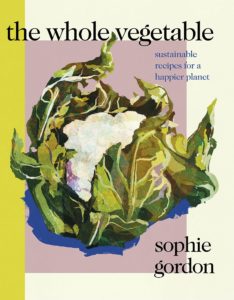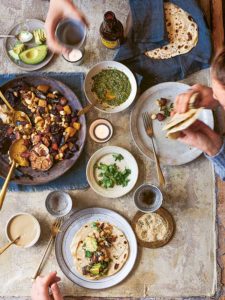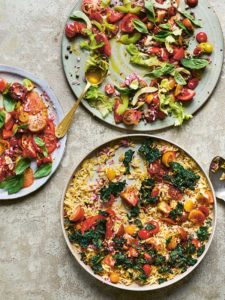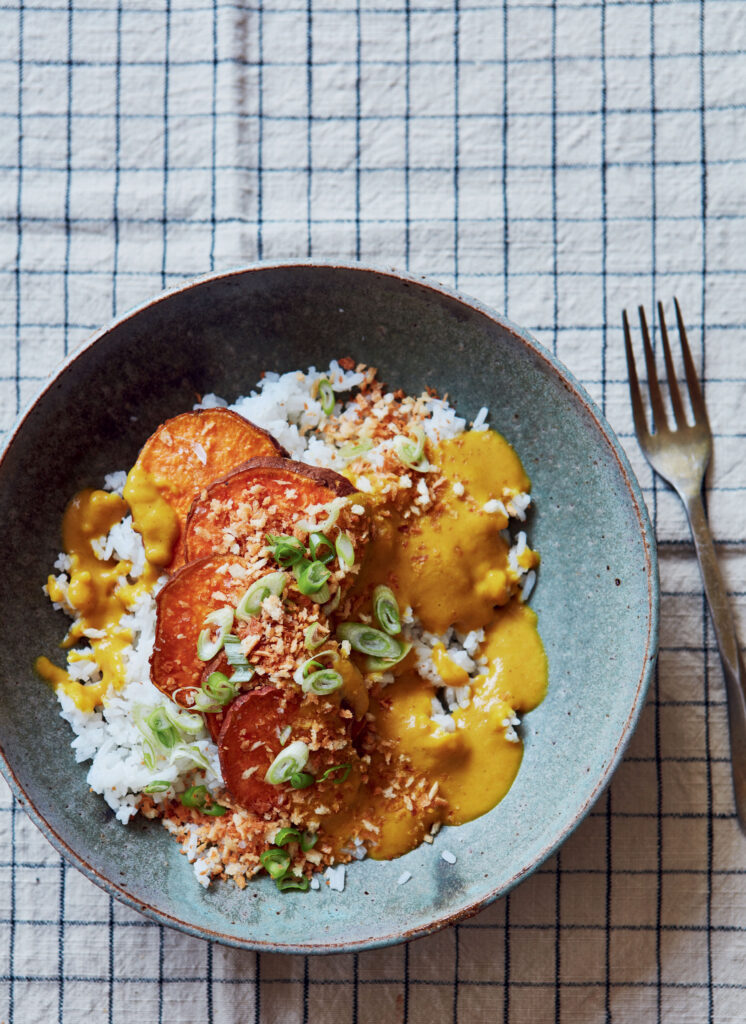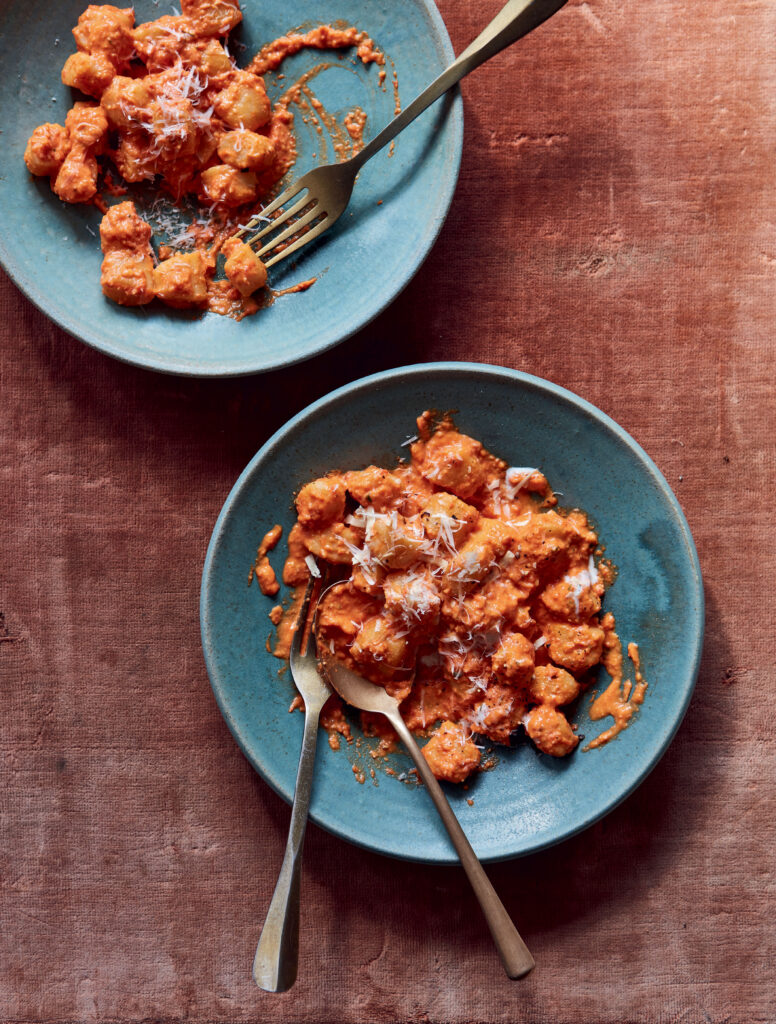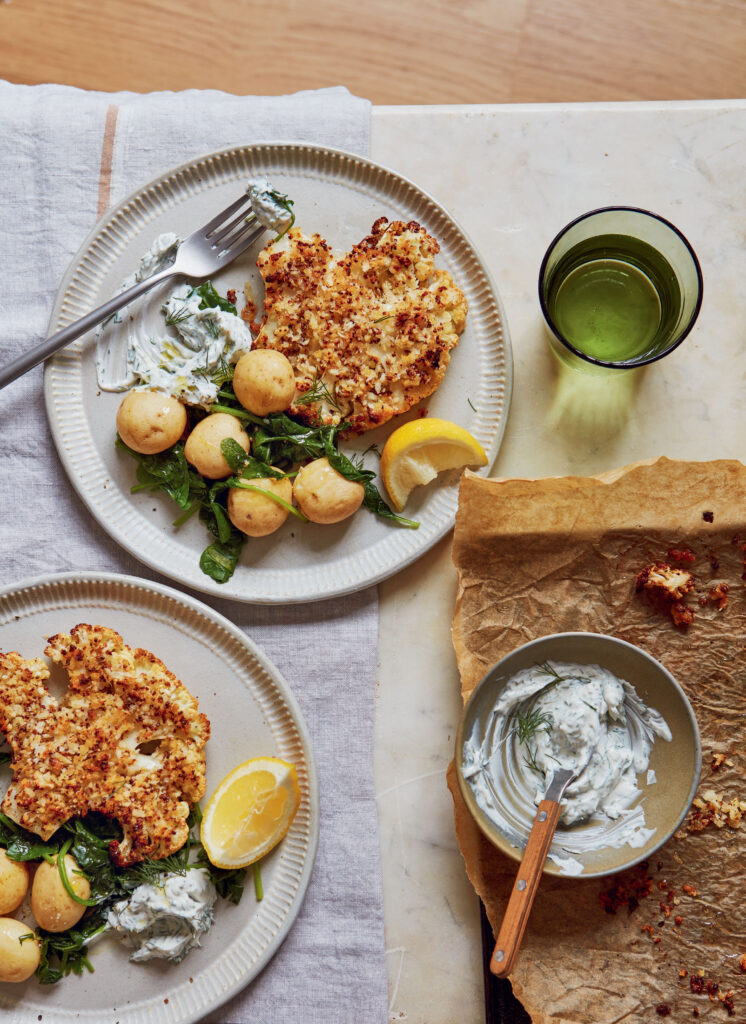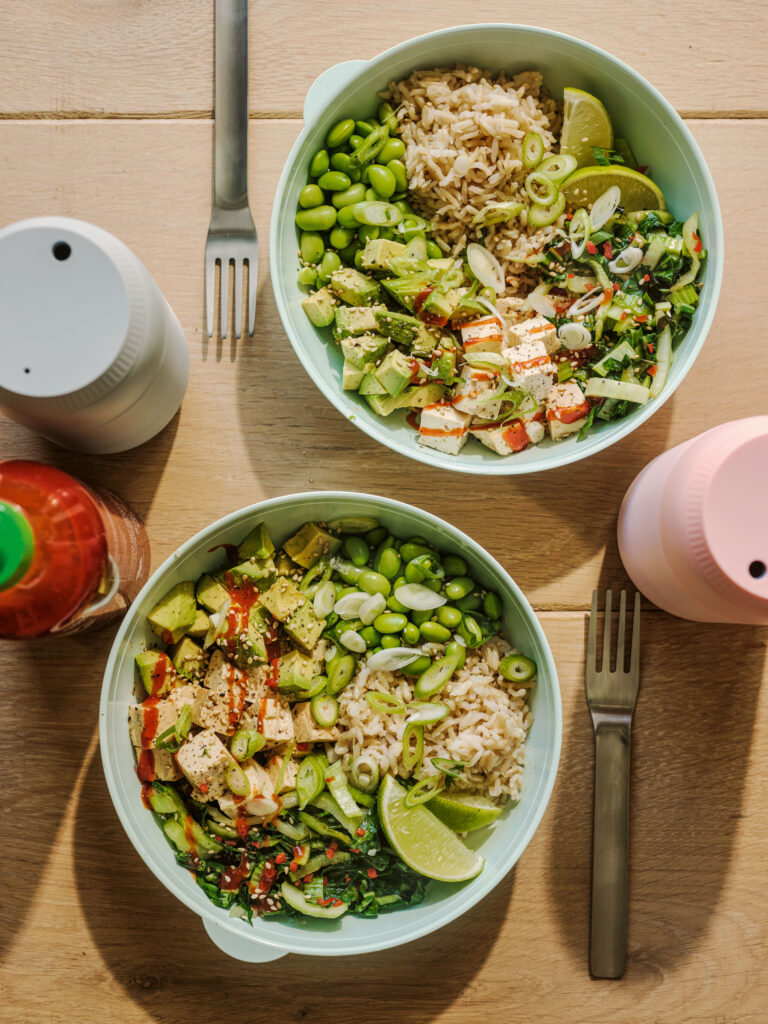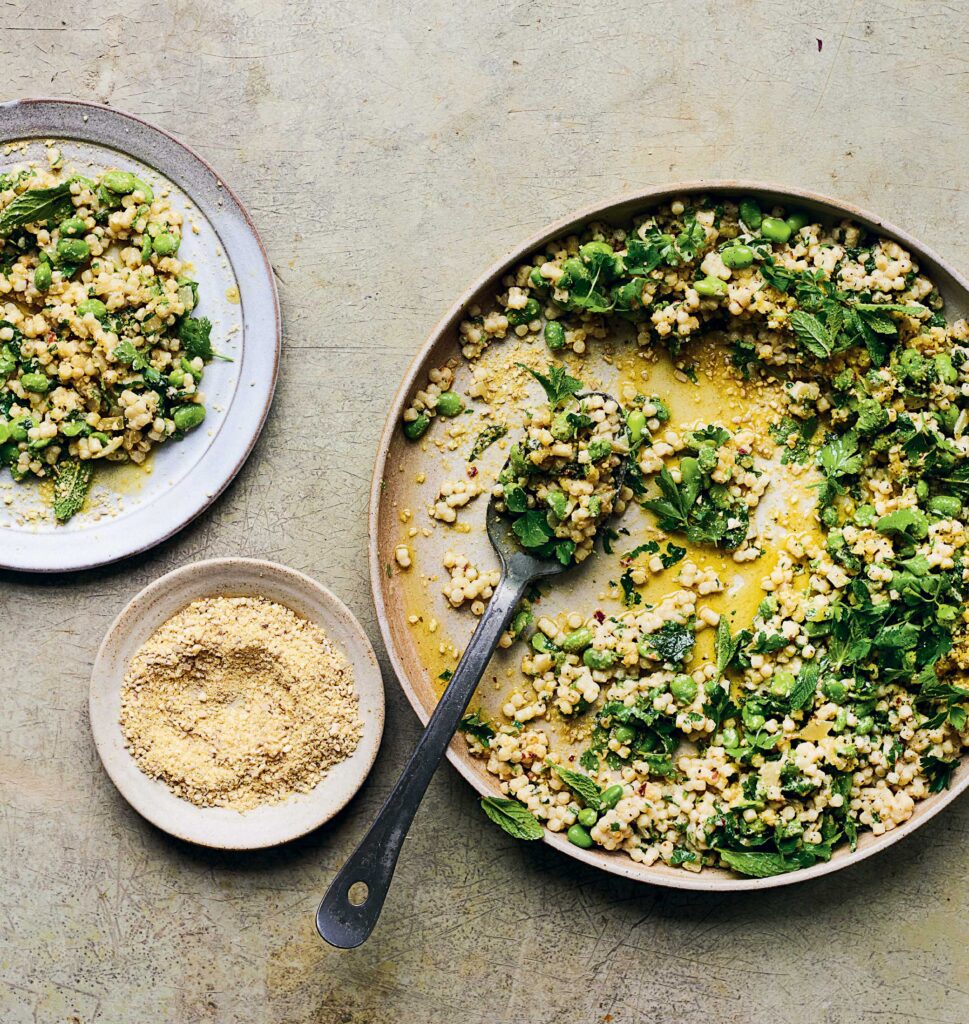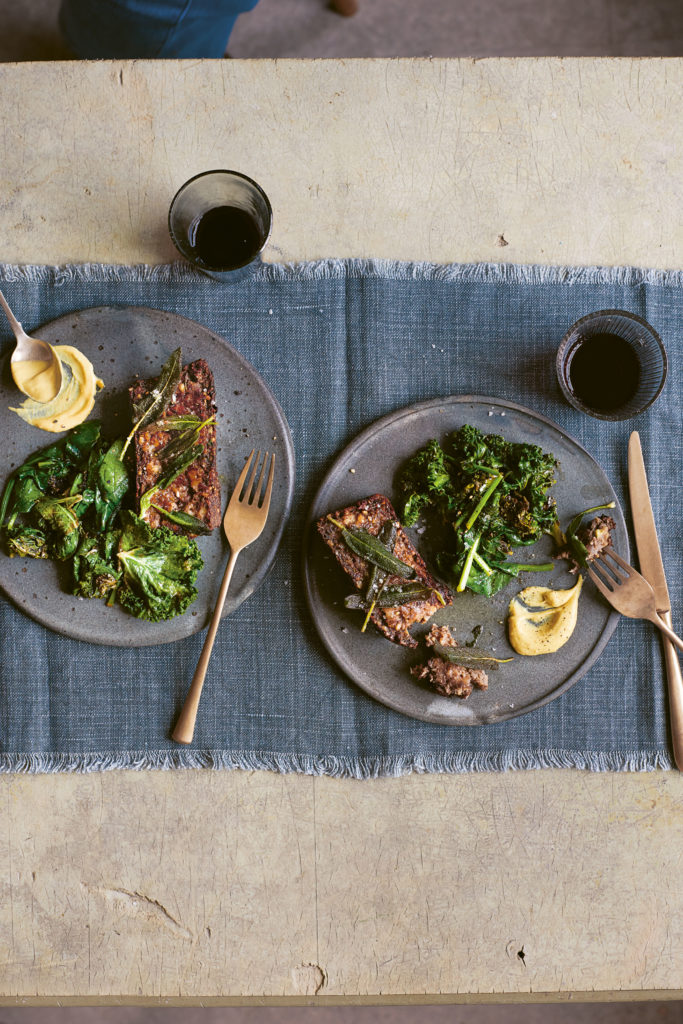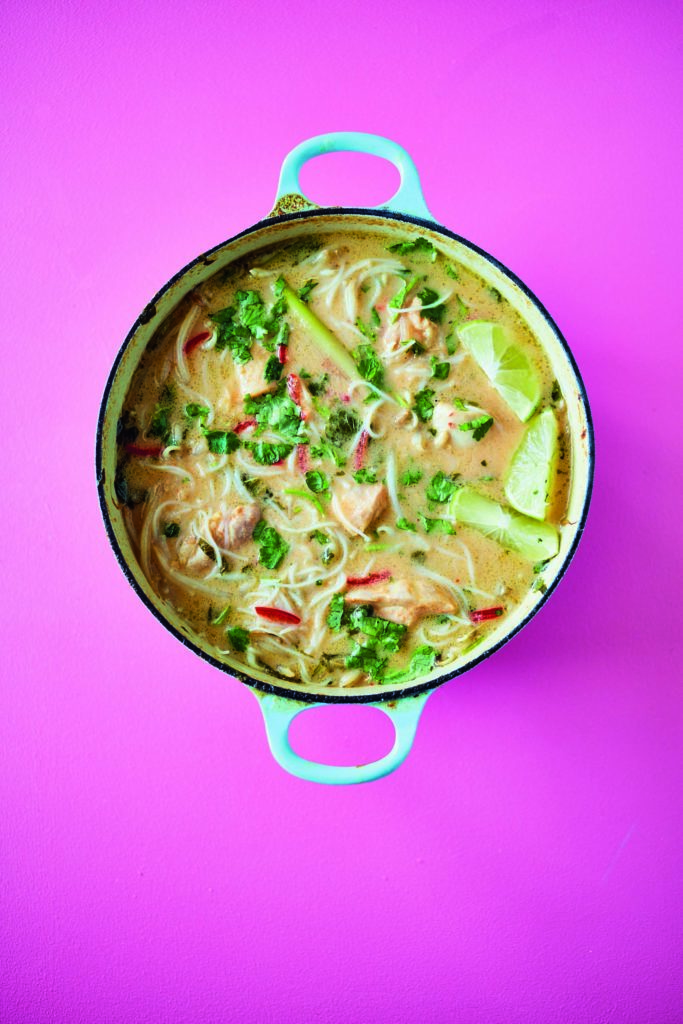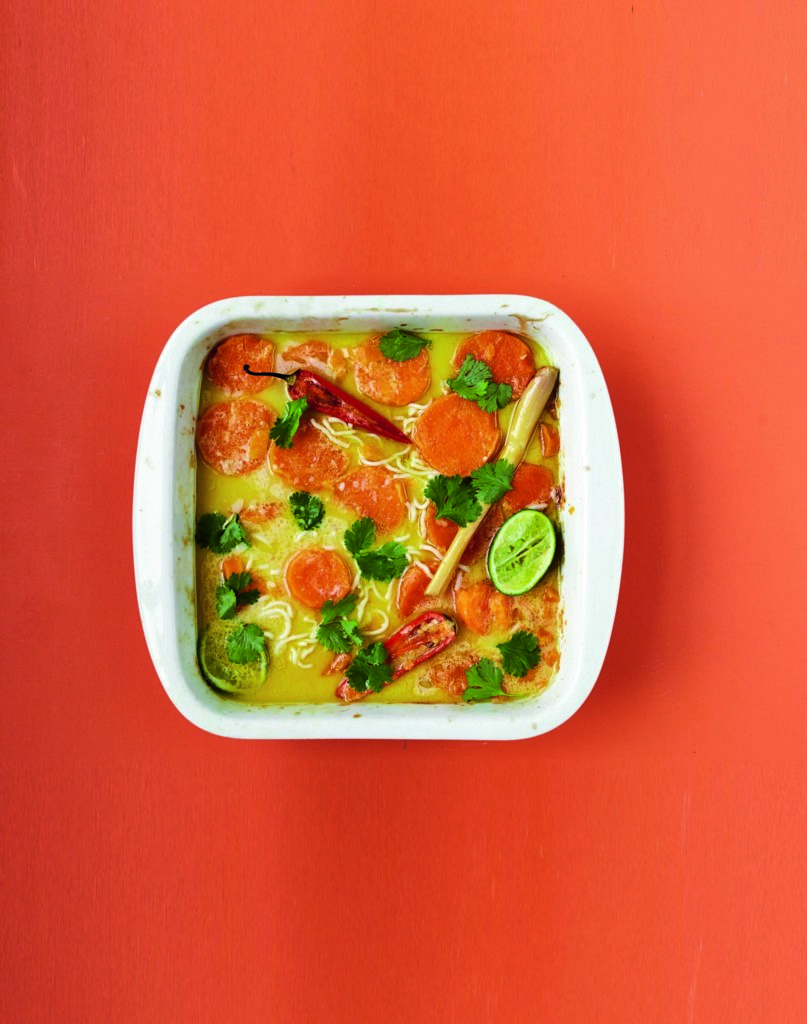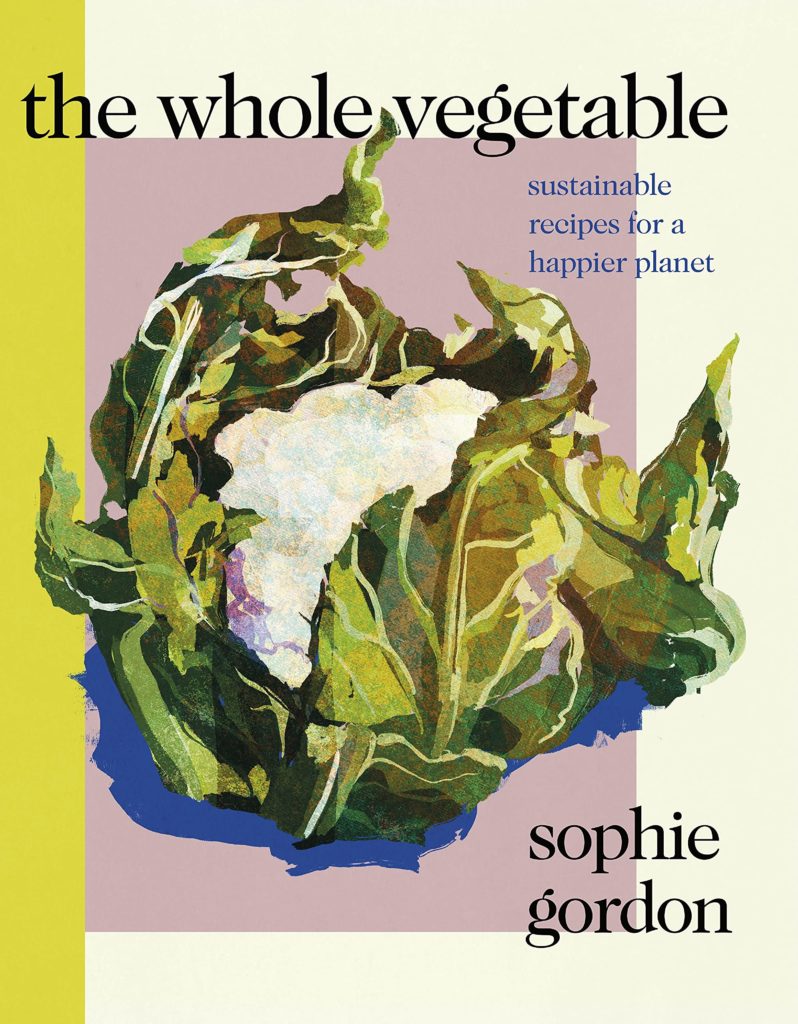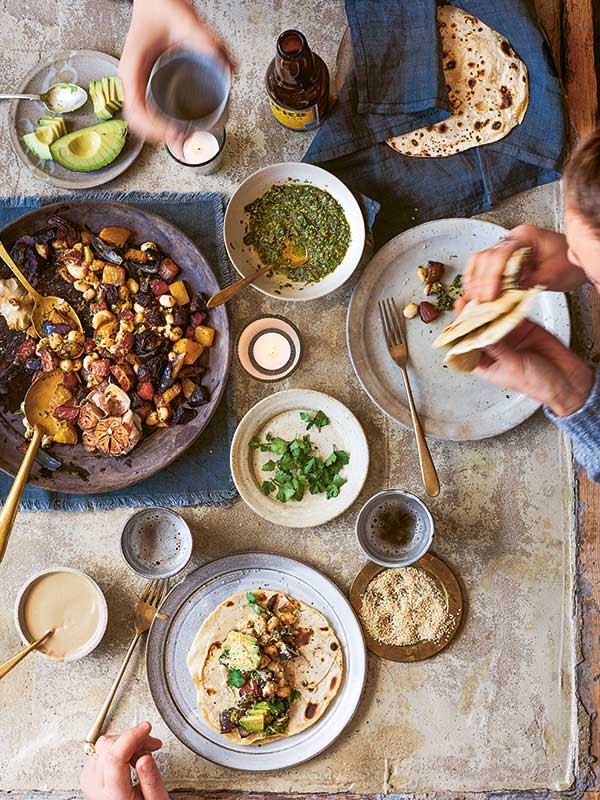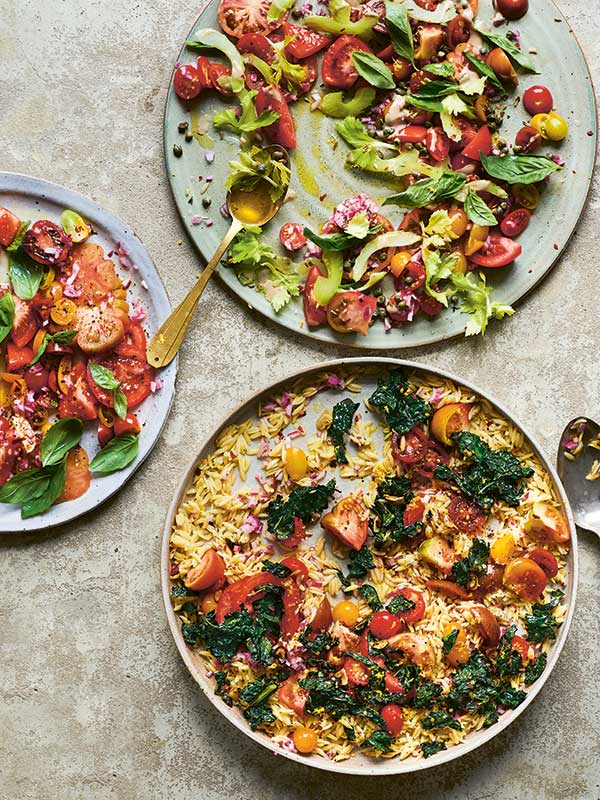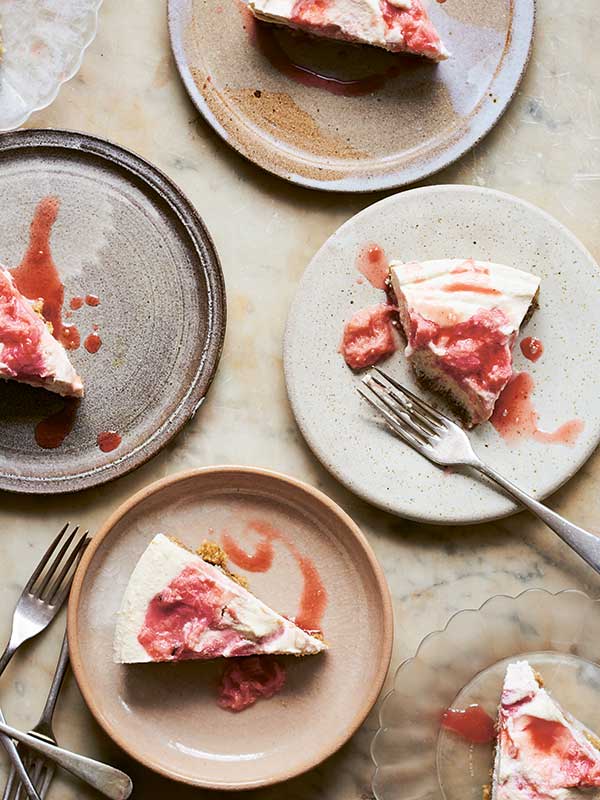Cabbage Ramen with Homemade Ramen Noodles
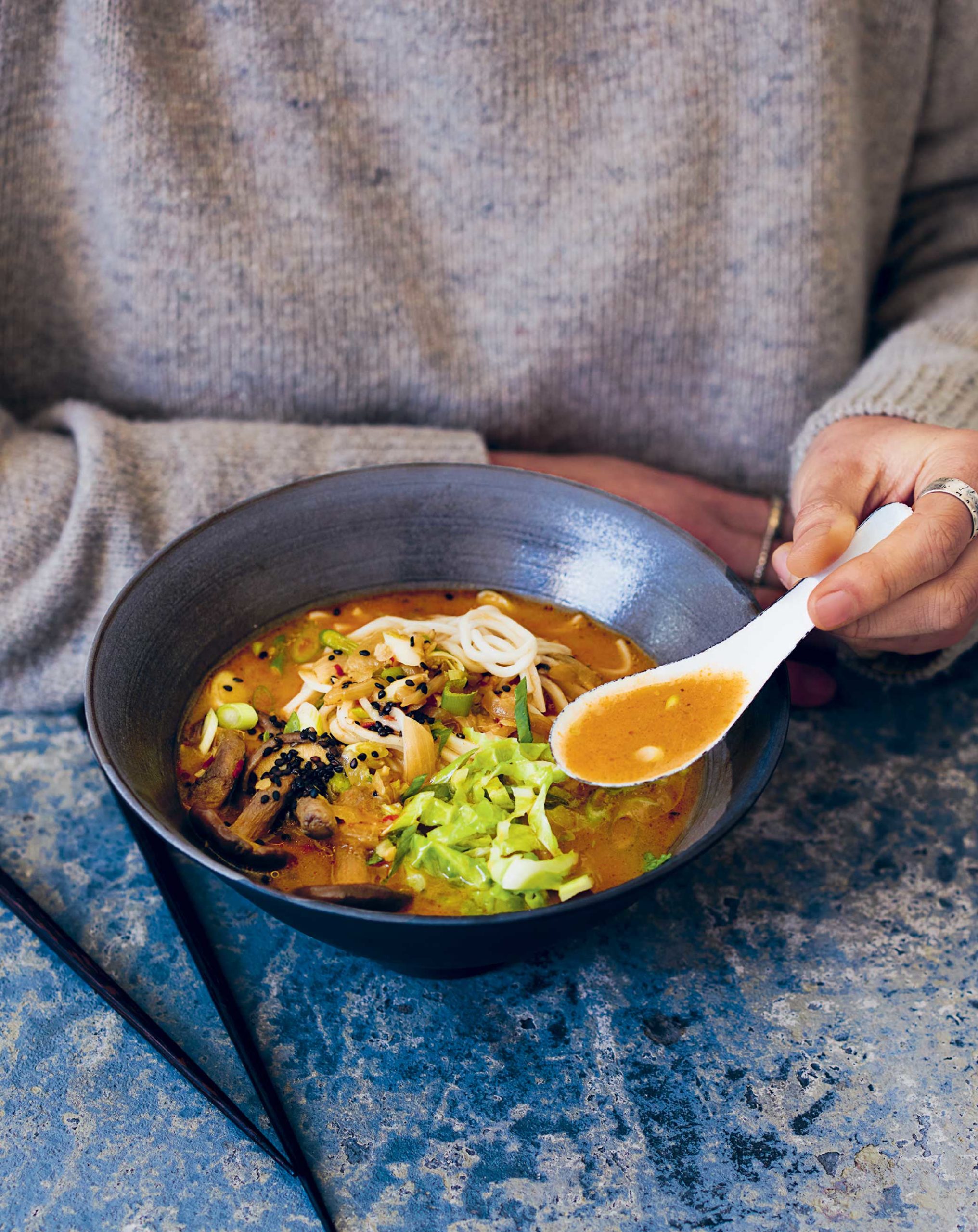
Make a ramen from scratch with this hearty and flavoursome vegan recipe complete with homemade noodles.
From the book
Introduction
I’ve always been obsessed with ramen. Ever since I had my first bowl of the deliciousness that it is, I couldn’t help but want to try making one myself. The broth is super simple, and the longer you leave it, the better it will be. It’s more involved than other recipes purely because we’re making the noodles from scratch, but once you get the hang of it, this one will definitely be a repeat.
Ingredients
| For the kansui (makes more than needed for the recipe: store in a jar for up to 6 months): | |
|---|---|
| 30g | baking powder |
| For the noodles: | |
| 125ml | hot water (make sure this is not boiling) |
| ½ tsp | salt (high quality preferably) |
| 1 tbsp | kansui (see above) |
| 210g | plain flour, plus extra for dusting/kneading (00 flour is great here – you can also use bread flour, although the dough can be a bit harder to work with if you are hand kneading rather than using a processor, but you get a chewier noodle because the protein in the flour is higher than in plain) |
| For the ramen: | |
| 1–2 tbsp | olive oil (garlic or chilli infused oils are great) |
| 1 | medium white/brown onion, roughly chopped |
| 4-6 cloves of | garlic, thinly sliced |
| 2 tbsp | sesame seeds (black or white) |
| approx. thumb-sized piece of | ginger, sliced thinly or grated |
| 1.5–1.75 ltrs | vegetable stock |
| 2–4 tbsp | soy sauce or tamari |
| 1½ tsp | crushed red pepper flakes, or 1 tbsp Korean red pepper powder if you have it |
| 4 | spring onions |
| 1 tbsp | tomato purée |
| 1 tbsp | miso paste (white, yellow, brown) |
| approx. 125ml | soya milk (optional – if not using, you may need more stock/water) |
| ½–1 | of choice (hispi, king, green, Savoy, etc. – start with half depending on how small your cabbage is and how hungry you are) |
| approx. 8 | dried shiitake mushrooms or 150g fresh mushrooms (or you could use both for an extra ‘mushroomy’ ramen) |
| salt and pepper | |
| noodles (see above), or approx. 350g bought ramen noodles if not making from scratch | |
| Optional additions: | |
| dried seaweed/sea vegetables/nori sheet | |
| sesame oil | |
| chilli oil/sauce | |
| fresh coriander, roughly chopped | |
| tofu (any kind/preference) |
Method
To make your own kansui, preheat your oven to approximately 150°C fan. Spread the baking powder on a foil-lined tray and bake for around 1 hour. Once cooked, allow to cool entirely and store in an airtight container/jar. Use accordingly.
To make the noodles, stir together the hot water, salt and kansui in a bowl. Wait until the kansui and salt have completely dissolved. Sift in about three-quarters of the flour. Making sure your hands are floured, begin to carefully knead, slowly adding the rest of the flour and continuing to knead until you have a smooth dough with no lumps. If the mixture is a little dry, add water, 1 teaspoon at a time. You want the dough to form well without sticking to your hands. Shape it into a rough square and cover, then leave to rest for a minimum of 1 hour. If you want to use cling film here (and if you can find a compostable one) go ahead and use that to wrap the dough, or cover with a bowl.
While your dough is resting, make the broth. In a large pot over a low-medium heat, heat your oil and fry the onion until golden brown and fragrant, about 3–4 minutes. Add the garlic and continue to fry until this also turns golden, about another 1–2 minutes. Make sure you don’t burn the garlic.
Stir in the sesame seeds and ginger and fry for a few seconds, then go ahead and add your stock, scraping the bottom of the pan with a wooden spoon to remove any of the ingredients that have stuck (don’t worry if they are slightly charred, this will enhance the flavour).
Add the soy sauce or tamari, crushed red pepper flakes, spring onions, tomato purée, miso paste and soya milk. Bring to the boil, stirring frequently, then lower the heat to a simmer and add your cabbage and mushrooms. Allow to simmer until the cabbage and mushrooms have wilted and are very tender. The broth will start to thicken at this stage. Season with salt and pepper to taste.
To make the noodles, split the dough into 4 even pieces and sprinkle with a little extra flour. If you are not using a pasta maker/roller, you’ll need to flour a surface and roll each piece approximately 1cm thick and as rectangular as you can get. Rub flour all over each one, then fold up until you reach the end, creating a smaller rectangular shape that’s about 15cm wide. Using a sharp knife, carefully cut into the desired thickness for your noodles, placing them in a floured bowl while you do the rest. If you are using a pasta maker, start flattening the dough on the lowest setting, working your way up to achieve 1cm thin regular shapes. Then cover each flattened piece with flour and pass through either a noodle cutter or another cutter should you want thicker noodles. Again, place in a floured bowl while you make the rest.
This next stage is optional: you can remove about half or less of the solids from the broth and about 125–250ml of the liquid, add these to a blender and blitz until smooth. Add back to the broth. I like to cook the noodles separately, as you can pour the broth over when serving and don’t have any residue starch in the broth. To cook the noodles, put them into a pot of salted boiling water and boil for about 3 minutes, then drain.
To serve, divide the noodles between bowls and ladle over the broth. You may have extra broth, which is why it’s good to cook it separately. Serve with any extra or desired toppings. Note: if you are adding tofu, I’d go ahead and add this when the broth is simmering.
Note: If you are making the noodles from scratch as opposite, see instructions for making your own kansui. The kansui is just baked baking powder, very simple, but it does take an hour to cook in the oven, so make sure you’re prepped. You’ll also need to leave the noodle dough to rest for an hour, so make sure you allow time for this. You can make the broth while the noodle dough is resting.
Waste tips: This broth can easily be made in a larger batch and put into the fridge or freezer. It’s a great base to add to. Occasionally I’ll add other vegetables if I fancy a more veggie-heavy ramen. Using cabbage of course is not traditional, but often pak choy and Asian-type vegetables are imported and not seasonal, so here you can achieve a similar taste with a seasonal vegetable. Making your own noodles is a relatively lengthy process, but definitely worth it. You can very easily double or multiply the quantities to make more. They keep well in the fridge for about 3–5 days and can also be frozen. I would recommend making sure they are well floured if you are putting them into the fridge or freezing them, to help prevent them sticking. The best thing about the noodles is that the dough can double up as pasta. See pages 186 and 216 for a few pasta ideas you could use with these noodles.

